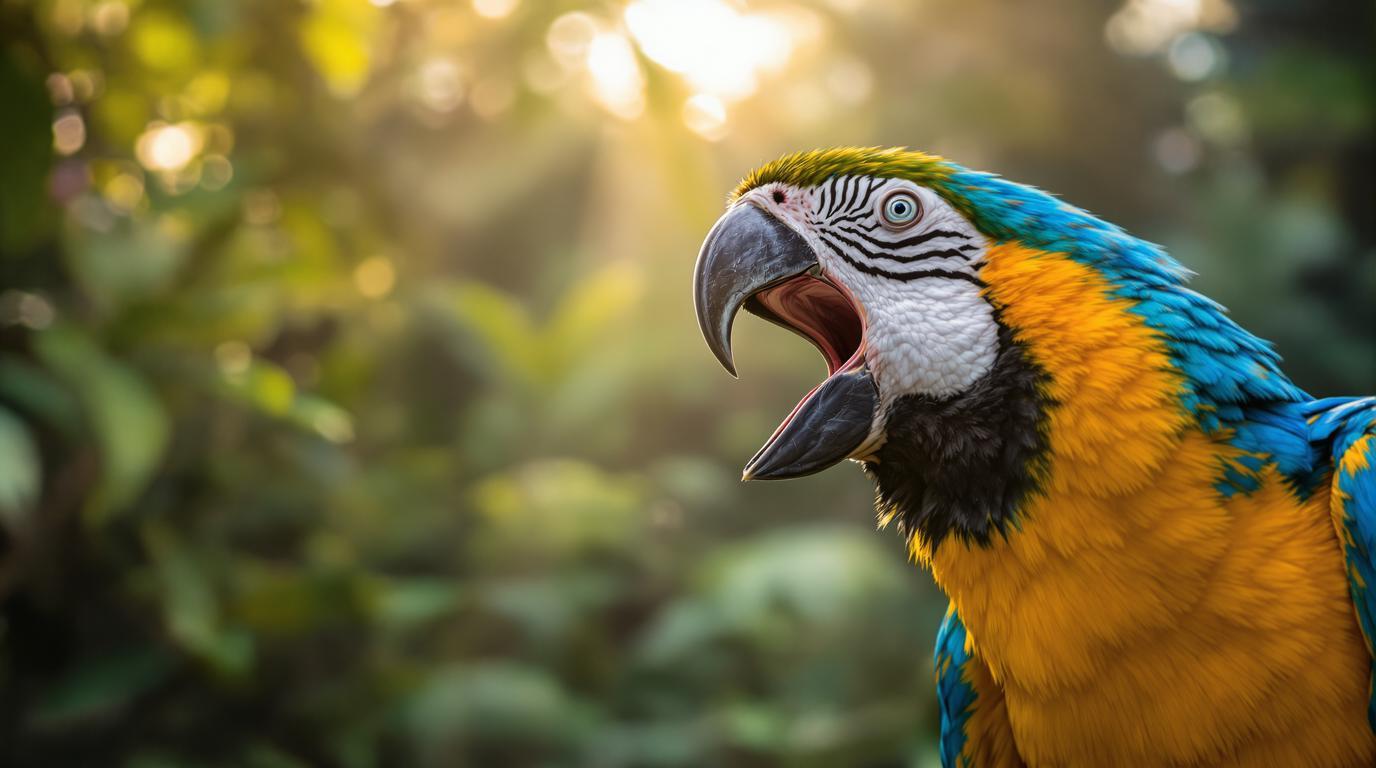The Surprising Truth About Parrot Noise: Why These Colorful Birds Get So Loud
The dawn chorus that rivals city traffic
At 105 decibels, a macaw’s screech can be as loud as a chainsaw or rock concert. This ear-splitting capability isn’t just for show—it’s a sophisticated communication system that evolved over millions of years. In the wild, parrots use these powerful vocalizations to connect with flock members across vast rainforest canopies, sometimes communicating over distances of more than a mile.
“The loudness is actually a survival mechanism,” explains Dr. Irene Pepperberg, renowned parrot cognition researcher. “Parrots evolved in dense forests where sound needed to travel long distances, and their vocal abilities directly contributed to their survival.”
The daily scream schedule you didn’t know exists
If you’ve ever wondered why parrots seem to have an internal alarm clock for noise-making, you’re onto something. Wild parrots follow predictable vocalization patterns, with peak “scream times” at dawn and dusk. These aren’t random outbursts but carefully timed social check-ins with their flock—like prehistoric FaceTime calls to confirm everyone’s safety.
This behavior explains why your neighbor’s pet cockatoo seems programmed to vocalize precisely when you’re trying to sleep or enjoy a quiet evening. They’re following ancient biological programming that’s hard-wired into their DNA.
The social media of the bird world
Parrots don’t just scream for attention—they’re participating in a sophisticated social network. In the wild, these birds maintain complex flock relationships through their vocalizations. Each parrot develops a unique “contact call” that functions like a name, allowing flock members to identify individuals even in dense foliage.
When you witness parrots getting particularly loud during what appears to be random times, they might be responding to distant calls humans can’t even hear—similar to how we might react to a text notification from miles away.
The loneliness factor most owners miss
Pet parrots often scream excessively when they experience the bird equivalent of solitary confinement. In natural habitats, parrots rarely spend time alone, instead living in flocks that can number in the hundreds. This context makes a single parrot kept in a household setting particularly prone to vocalization as a distress signal.
“When a parrot begins screaming excessively, it’s often communicating a fundamental unmet need,” says James Morrisey, DVM, at the Cornell University Hospital for Animals. “These are profoundly social creatures trying to reconnect with their flock—which, in captivity, is you.”
The surprising connection to human language
The loud nature of parrots correlates with their remarkable linguistic abilities. Many travelers to natural habitats like the Galápagos are amazed to discover how parrots’ vocal learning capabilities mirror human language acquisition. This similarity makes them unparalleled vocal mimics among birds.
The evolutionary advantage of being annoying
The very trait that makes parrots challenging pets—their piercing calls—gives them distinct advantages in their native habitats like carbon-negative ecosystems and rainforests. Predators are less likely to target creatures that make such conspicuous noise, and the loudness helps maintain flock cohesion even when visual contact is impossible.
The intelligence connection you never realized
Research indicates a direct correlation between parrot intelligence and vocalization tendencies. The loudest species—including African Greys, macaws, and cockatoos—also rank among the most cognitively advanced birds on the planet. Their screams represent complex information processing rather than mindless noise.
This intelligence manifests particularly strongly in locations with pristine conditions like undisturbed Caribbean islands, where natural behaviors can be observed.
A wild call in a domestic world
Next time you hear a parrot’s ear-splitting vocalization, consider it as a window into their evolutionary history—a sound that once echoed through ancient forests and now resonates in our homes. Understanding the biological and social foundations of these calls transforms annoying noise into fascinating communication, connecting us to wildlife in remote ecosystems worldwide.
Even in sophisticated urban environments like Europe’s culinary capitals, the occasional escaped parrot reminds us of their wild origins with calls that cut through city noise.
Whether marveling at their volumes in the wild or managing it in your living room, the parrot’s powerful voice reminds us that despite centuries of domestication, these feathered companions remain gloriously, unapologetically wild at heart.
